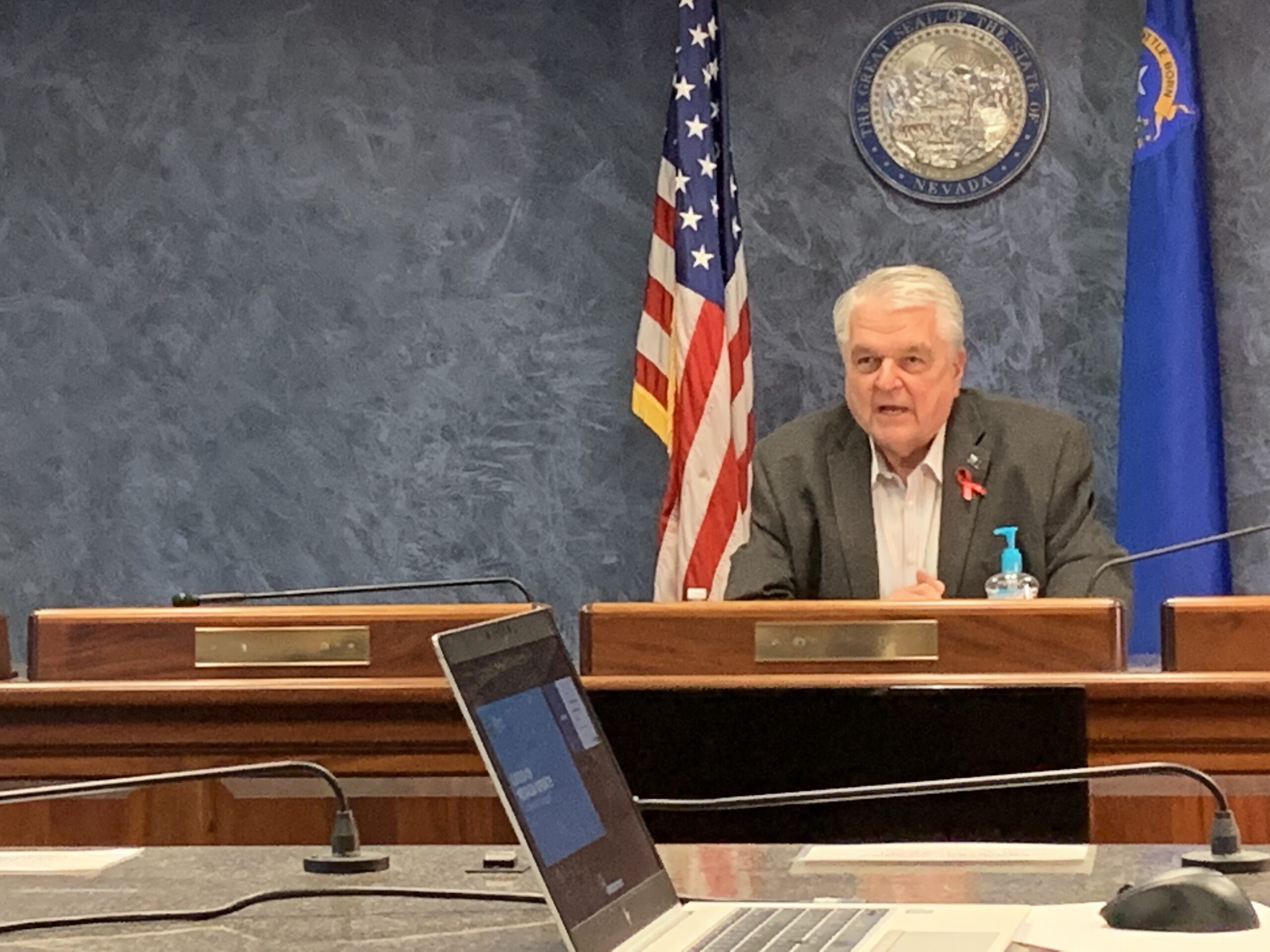Failing to plan is planning to fail

On Thursday night, Gov. Steve Sisolak held a press conference to address, among other things, the fact that he does not yet have a plan for when or even exactly how Nevada is going to reopen its economy. He empathized, talked up his team, offered generalities and platitudes, complained about his critics, and insisted that he was looking at data and science. But he would not identify any sort of benchmark as to what would justify Nevadans getting back to work.
Next week we’ll have the details we need, promised the governor, somewhat unconvincingly.
Almost nobody thinks there should not have been a shutdown early, or that schools shouldn’t have closed, or that we don’t face serious risk from a virulent and deadly disease. I certainly don’t think that, and I’m glad we took early and serious action to give ourselves time to adequately fight this medical battle.
But if we are going to brag that Nevada was one of the first states to shut down our economy in response to COVID-19, surely, then, we should have been among the first to have some sort of plan in place for getting out of it. The governor’s initial declaration of a State of Emergency was issued on March 12. The time to start planning the exit strategy of the economic shutdown was five minutes after that order, not five weeks.
Because our economy is so dependent on large-scale entertainment, conventions, and non-essential travel, it is inevitable that we will suffer the hardest and the longest as America adjusts to the post-COVID-19 world. This is all the more reason that the rest of our economy gets going as soon as absolutely possible, and why our planning needed to be further ahead of the curve than it is now.
***
The thing about plans, as every young military officer is taught, is that they almost never survive contact with the enemy. Situations change. New facts are learned.
But adjusting an already-existing plan to account for this new information is always, always faster and more effective than waiting until the last minute and trying to come up with a “ideal” plan with all the information. This is because you never have all of the information, and you never will. It’s why, as General George Patton would have said, “A good plan, violently executed now, is better than a perfect plan next week.”
The federal government has put out a set of guidelines with various benchmarks on what should trigger various phases of easing back into a more normal life. Several states are now shifting their focus to reopening, either individually (Texas, Utah) or regionally (Northeast, West Coast states). (It is puzzling that we are not part of that West Coast coalition, and I’m curious whether that was a deliberate choice by Nevada or a snub from our neighbors – either conclusion is concerning.) Some of these “plans” that have been touted are really more general outlines, all of them are late, and none of them seem to define victory (even interim victories) with sufficient specificity. But at least the frameworks exist to build from.
Those plans will adjust and change. But having them in place allows for businesses and individuals to make their own plans, and also provides a sense of certainty and even hope for the future.
We do need more data, which we will only get via more testing. Everyone understands that, except apparently certain state bureaucrats shutting down new types of tests that haven’t slogged their way through formal approval processes yet. But then, everyone is also in the same lack-of-data boats, and that hasn’t prevented the planning from beginning elsewhere. Not having the numbers to plug in to your benchmarks doesn’t prevent you from creating benchmarks, after all. And as is always the case, we will get a lot of new information as we readjust our behavior and open back up.
It doesn’t help that our bureaucracies have failed so mightily. I understand our already creaky unemployment system was never designed for these numbers, but if the governor can’t fix what is essentially data-entry and funds disbursement (with, by the way, a ton of Nevadans out there who would be happy for some extra work right now), it’s hard to have faith in more complex government planning and control of our economy, temporary or otherwise.
Without a sense that our state leadership has a plan, which easily translates into “they don’t know what they’re doing,” people will simply take matters into their own hands. Commerce will recommence, legally or not. People will begin to socialize in ever larger groups, legally or not. Already I’m seeing more traffic on the roads, more people in stores which remain open, and a lot less patience with the shutdown. And as I’ve said before, if COVID-19 is as deadly as originally thought, this failure to plan and communicate the exit strategy could prove deadly indeed.
***
So what do we need to hear from the governor next week?
- Ultimate victory needs to be defined. Right now we're “Staying at home to beat the virus.” But what does that mean? Until we have a vaccine or a cure? When hospital capacity hits some percentage? We need a clear and public goal we're working towards, and right now neither federal nor state responses seem even to be considering this question, much less the answer.
- In the interim, there must be solid metrics which trigger openings, which is at least happening elsewhere. “When rate of decrease in hospitalizations/deaths = X, then retail stores open back up, as long as people are wearing masks," or something to that effect. (The federal guidelines suggest exactly this sort of thing, but a Nevada-specific plan must focus on casinos, conventions, and concerts.) Conversely, there should be clear metrics for identifying and blunting infection flare-ups. Correlate those metrics with anticipated timelines to the extent possible. Adjust them if necessary as we go, but they must exist, and they must be well-publicized.
- Shutting down everything in a blanket way was fine for an emergency first step, but now we need to look individually at various types of workplaces and gatherings — what's actually putting us at risk, what mitigation measures are effective, etc. For example, there does not seem to be any scientific justification for closing down parks, golf courses, or other outdoor activities. Doing it by industry is not sufficient — physical layout of individual workspaces and office buildings make all the difference. And at some point, we need to just trust people to do their best, including in small business offices where people can keep generally clear of each other, but work can still be done. Trying to be heavy-handed will – and already has – backfired on this and other governors around the country.
- As I argued two weeks ago, the Legislature needs to be called into session. The governor is being overwhelmed with details and choices no one person can or should be expected to make. Moreover, constructive pushback is welcomed by effective leaders, and (with full understanding of the limitations of our not-always-impressive Legislature) we now have the luxury of time to debate these measures, carve out logical exemptions, etc.
- Critics must stop being ignored. It’s one thing to scoff at Las Vegas Mayor Carolyn Goodman’s dubious beliefs that there is no justification for the shutdown in the first place, or that the Strip should open full throttle tomorrow. But stiff-arming very reasonable concerns and requests for the broadest details expressed by Senate Minority Leader James Settelmeyer demonstrates a terrible lack of communication within the government, and will sow mistrust where credibility is needed instead. As opponents of President Trump often point out, attempting to delegitimize valid criticism as “attacks,” as Sisolak did during his press conference, is not a good way to inspire confidence. And say what you will about Trump, at least he’s actually engaging Congress on this issue, and on a bi-partisan basis.
- Make a decision on schools. As much as I’d love for my kids to go back to class, I don’t know anyone who actually thinks that’s happening this year. In any event, we need some certainty. Parents, kids, teachers, and administrators need to plan for the end of the school year one way or another. Even states which have been the most aggressive about pushing for reopening like Texas and South Dakota have announced that schools will not reopen this academic year.
- Establish where our limits are in advance. It should be an absolute no-go to put tracking software on our phones, for example, or be required to carry “immunity cards.”
- We also need to start tracking the health toll of the shutdown — suicides, mental health, physical health, etc. Poverty and isolation kill, too. We also must discuss and account for the harder-to-quantify but still crucial value in freedom, and in living our lives, as opposed to merely staying alive. Without this, we are not properly conducting the needed cost-benefit analysis.
- Finally, it must be clearly communicated and understood that people will still get sick and die. We have lived with death and disease throughout the entirety of human history, and no politicians will change that now. This is not meant to be callous, but anything less is simply dishonest. The purpose of the shutdown was to “flatten the curve,” not eliminate it, which always was beyond our mortal powers. This virus is not going away any time in the foreseeable future, but we cannot hide from it forever.
***
I don’t think Sisolak is a bad person, and I don’t doubt the sincerity of his empathy for those at risk from this terrible disease. But when I listened to him at the press conference and heard his non-answers to important questions, it is all too clear that he doesn’t have any sort of vision for how to get out of this situation, and is so terrified of getting it wrong that he’s deciding not to decide. Simply put, he’s failing to rise to the moment. This column is not meant to attack him, but to hopefully help boost him (along with the rest of us). Not everyone who criticizes you is your enemy.
What Sisolak needs to hear and understand is that whatever he does will be wrong, or at least imperfect. Any plan he makes will be flawed and inadequate, will be executed imperfectly, and will lead to suffering, and even death. Heavy is the crown indeed, which is one of the reasons he needs to start sharing that crown. (Emergency executive powers were never meant to be so indefinite, and our laws should be amended next session to require legislative ratification after thirty days of a declared emergency.)
But to quote the great band Rush, if you chose not to decide, you still have made a choice. And that choice would be the worst one of all – indefinite economic devastation, interminable losses of liberties, and a fed up citizenry losing their faith in the government, ignoring its directives, and spreading the virus around anyway.
The time to plan for recovery was a month ago. But better late than never. It’s time for the governor to lead us back to living, instead of just staying alive.
Orrin Johnson has been writing and commenting on Nevada and national politics since 2007. He started with an independent blog, First Principles, and was a regular columnist for the Reno Gazette-Journal from 2015-2016. By day, he is a criminal defense attorney in Reno. Follow him on Twitter @orrinjohnson, or contact him at [email protected].
